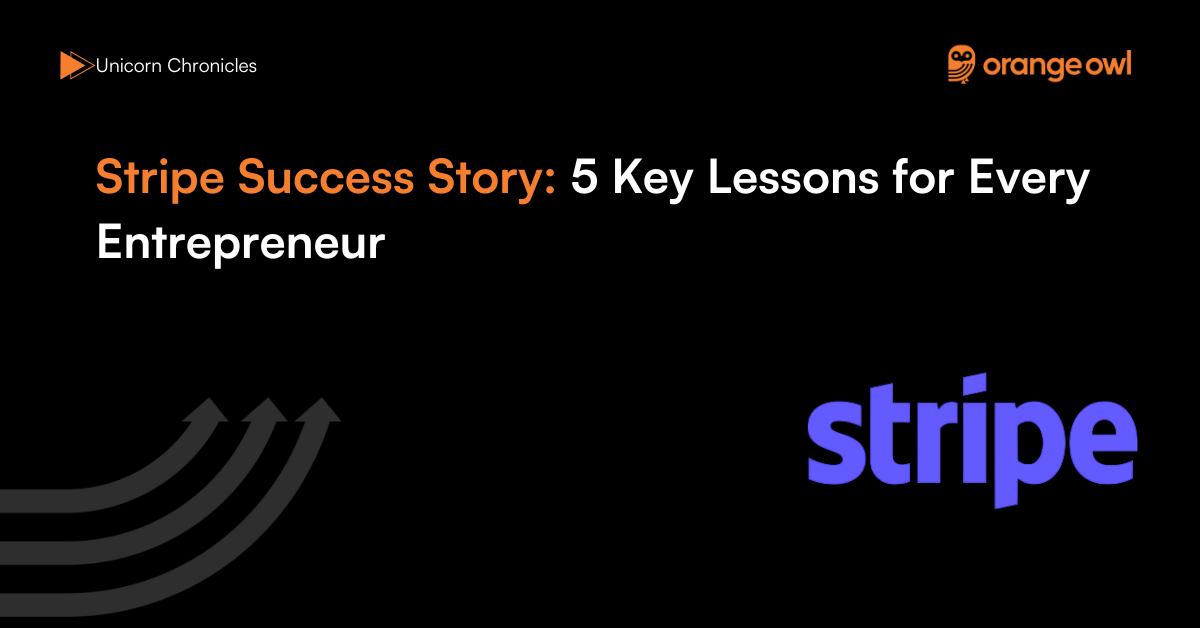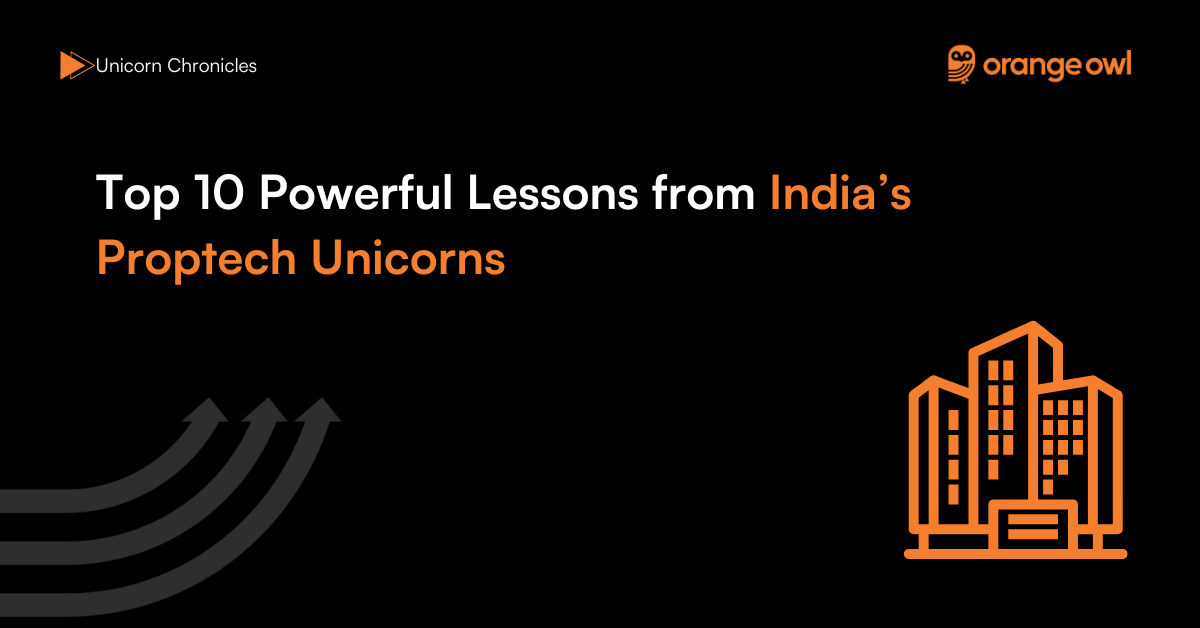The Most Comprehensive B2B Performance Marketing Guide for Business Success in 2025
Vivek Goel
February 5, 2025
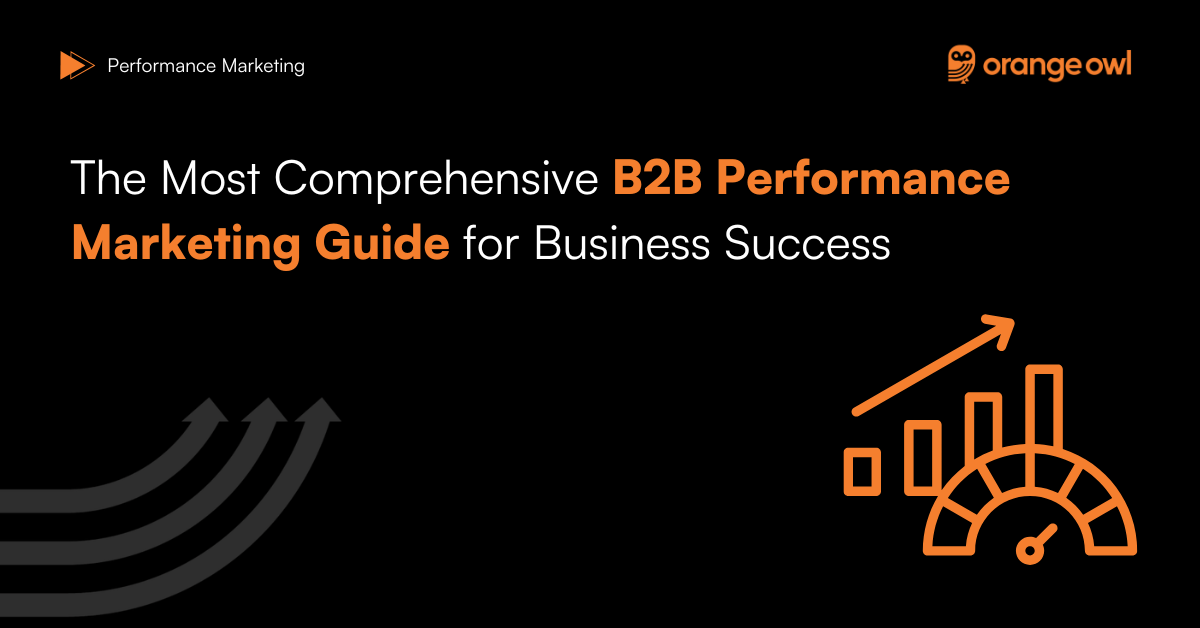
Table of Contents
Introduction
Performance marketing has become a crucial strategy for B2B companies looking to achieve measurable results and maximize ROI. This guide provides an in-depth look at B2B performance marketing, covering key strategies, best practices, expert tips, and real-world examples to help businesses succeed in 2025. In addition, we will explore the integration of marketing and go-to-market (GTM) strategies, which are essential for ensuring that your performance marketing efforts align with your overall business objectives and market positioning. This comprehensive approach will equip you with the knowledge and tools to develop a cohesive strategy that drives growth and competitive advantage in today’s dynamic B2B landscape.
Understanding B2B Performance Marketing
What is Performance Marketing?
Performance marketing focuses on campaigns that are measured by their performance, such as clicks, leads, and conversions. Unlike traditional marketing, which often relies on broader metrics like brand awareness and reach, performance marketing is all about measurable results. In the B2B context, this involves strategies tailored to business clients, emphasizing lead generation, nurturing, and conversion optimization.
Top Five Benefits of Performance Marketing
- Measurable Results: Every aspect of performance marketing can be tracked and analyzed, from ad impressions to final conversions. This transparency allows marketers to understand precisely what is working and adjust their strategies accordingly.
- Cost-Effectiveness: Since you pay for actual performance (e.g., clicks or conversions), there is a lower risk of spending money on ineffective campaigns. This can lead to a higher return on investment (ROI).
- Targeted Approach: Performance marketing enables highly targeted campaigns. You can tailor your ads to specific audiences based on demographics, behaviors, and preferences, ensuring your message reaches the right people at the right time.
- Scalability: Successful performance marketing campaigns can be scaled up quickly. If a particular ad set or strategy is delivering good results, you can increase your budget and expand the campaign to reach a broader audience.
- Data-Driven Decision Making: With detailed analytics and reporting, performance marketing provides insights that inform future strategies. Marketers can make data-driven decisions to continually refine and improve their campaigns.
How is Performance Marketing Different from Other Forms of Marketing?
- Traditional Marketing: Often focuses on broad metrics like brand awareness and reach. It is more challenging to measure the direct impact of campaigns on sales or conversions.
- Content Marketing: While content marketing aims to attract and engage audiences through valuable content, performance marketing is more focused on immediate, measurable actions like clicks and leads. However, performance marketing can incorporate content marketing tactics to drive results.
- Inbound Marketing: Inbound marketing involves attracting customers through content and experiences tailored to them. Performance marketing, on the other hand, often involves paid strategies to drive immediate actions.
- Outbound Marketing: Outbound marketing includes tactics like cold calling and direct mail, which push messages out to a broad audience. Performance marketing is typically more targeted and relies on digital channels where performance can be tracked and measured.
- Brand Marketing: Brand marketing aims to build long-term brand equity and recognition. Performance marketing is more short-term focused, aiming for immediate results like lead generation and conversions.
In summary, performance marketing stands out due to its focus on measurable outcomes, cost-efficiency, targeted approach, scalability, and data-driven decision-making. It is particularly effective in the B2B landscape, where precise targeting and measurable results are crucial for driving business success.
Key Components of B2B Performance Marketing
Search Engine Marketing (SEM)
SEM involves using paid advertising to increase visibility on search engine results pages (SERPs). Key elements include:
- Pay-Per-Click (PPC) Advertising: Bidding on keywords relevant to your business to display ads on SERPs.
- Search Engine Optimization (SEO): Improving website content and structure to rank higher organically.
Example: A B2B SaaS company might use PPC to target keywords like “enterprise CRM software,” driving targeted traffic to their product landing page.
2.2 Content Marketing
Content marketing is about creating and distributing valuable content to attract and engage a target audience. This can include blogs, whitepapers, case studies, and videos.
Example: A logistics company might publish a series of blog posts on optimizing supply chain management, positioning itself as an industry expert.
Social Media Marketing
Leveraging social media platforms to reach and engage with your audience is a cornerstone of modern B2B performance marketing. Each platform offers unique opportunities and formats for engaging with your target audience. LinkedIn is particularly valuable for B2B marketing due to its professional user base, but other platforms like YouTube, Twitter, Facebook, and Instagram also offer effective avenues for B2B campaigns.
Types of Campaigns and Ads on Social Media
- LinkedIn Campaigns
- Sponsored Content: Promoted posts that appear directly in the LinkedIn feed. Ideal for sharing thought leadership articles, whitepapers, and industry reports. Example: A consulting firm could run a LinkedIn campaign sharing insights and thought leadership articles to engage potential clients. By promoting a whitepaper on “Trends in Business Process Outsourcing for 2025,” they can capture leads through a gated content form.
- Sponsored InMail: Personalized messages delivered directly to LinkedIn inboxes. Useful for direct engagement with potential leads. Example: A software company could use Sponsored InMail to send personalized invitations to a webinar on “Enhancing Cybersecurity in Remote Work Environments.”
- Display Ads: Banner ads displayed on LinkedIn pages, targeting specific industries or job roles. Example: An HR tech company might use display ads to target HR managers and directors, promoting their latest HR software solution.
- YouTube Campaigns
- Pre-Roll Ads: Short ads that play before YouTube videos. Great for brand awareness and driving traffic to your website. Example: A cloud services provider could create a compelling pre-roll ad showcasing their latest cloud solution, targeting IT managers and CTOs.
- In-Stream Ads: Ads that appear during YouTube videos and can be skippable or non-skippable. Effective for longer, more detailed product demonstrations. Example: A B2B manufacturing firm might run an in-stream ad featuring a detailed case study on how their machinery improved production efficiency for a major client.
- Bumper Ads: Six-second non-skippable ads designed for high reach and frequency. Example: A marketing automation platform could use bumper ads to promote a free trial offer, creating short, impactful messages to drive sign-ups.
- Twitter Campaigns
- Promoted Tweets: Regular tweets promoted to reach a larger audience. Useful for sharing content, news, or product updates. Example: A financial services firm could promote a tweet announcing a new report on market trends, targeting CFOs and financial analysts.
- Promoted Accounts: Campaigns to increase followers and build an audience. Example: A supply chain management company could run a promoted account campaign to grow their follower base among logistics professionals.
- Promoted Trends: Placing a hashtag in the “Trending” section to generate buzz. Example: A tech conference could promote a hashtag like #TechInnovate2025 to drive engagement and discussions around their event.
- Facebook Campaigns
- Carousel Ads: Ads that showcase multiple images or videos within a single ad unit. Ideal for displaying various product features or services. Example: A B2B e-commerce platform could use carousel ads to highlight different aspects of their solution, from inventory management to customer analytics.
- Lead Ads: Ads designed to collect lead information directly within the Facebook platform. Example: A marketing agency could use lead ads to offer a free consultation, capturing potential client information seamlessly.
- Video Ads: Engaging video content to capture attention and explain complex products or services. Example: A cybersecurity firm could create a video ad demonstrating their latest security software in action, targeting IT security professionals.
- Instagram Campaigns
- Sponsored Posts: Promoted posts appearing in the Instagram feed, effective for visual storytelling. Example: A design firm might use sponsored posts to showcase their portfolio, targeting business owners and marketing directors.
- Story Ads: Full-screen ads that appear between users’ stories, ideal for immersive content. Example: A B2B event planner could use story ads to highlight highlights from past events and promote upcoming conferences.
- IGTV Ads: Ads placed within IGTV videos, suitable for longer-form content. Example: A training company could use IGTV ads to share snippets of their online courses, encouraging viewers to sign up for full access.
B2B Examples of Social Media Campaigns
- LinkedIn Campaign for Consulting Firm
- Objective: Engage potential clients with valuable insights.
- Strategy: Share thought leadership articles, promote industry reports, and host webinars.
- Execution: Use Sponsored Content to share an article on “The Future of Business Consulting,” and Sponsored InMail to invite decision-makers to a webinar on “Navigating Market Disruptions.”
- YouTube Campaign for Software Company
- Objective: Increase awareness and drive traffic.
- Strategy: Create engaging video content showcasing product features and customer success stories.
- Execution: Run Pre-Roll Ads with a focus on key product benefits and In-Stream Ads featuring in-depth demos. Use detailed targeting to reach IT managers and software developers.
- Twitter Campaign for Financial Services Firm
- Objective: Promote a new market trends report.
- Strategy: Use Promoted Tweets and Promoted Trends to drive engagement.
- Execution: Tweet key findings from the report, promote these tweets to target financial analysts, and use a hashtag like #FinanceTrends2025 to generate discussions.
- Facebook Campaign for E-commerce Platform
- Objective: Highlight different features of their platform.
- Strategy: Use Carousel Ads and Lead Ads to attract and convert leads.
- Execution: Create a series of carousel ads showcasing inventory management, customer analytics, and sales reporting features. Run Lead Ads offering a free demo.
- Instagram Campaign for Design Firm
- Objective: Showcase their portfolio and attract new clients.
- Strategy: Use Sponsored Posts and Story Ads to visually engage their audience.
- Execution: Post high-quality images of past projects and promote these posts to business owners. Use Story Ads to highlight client testimonials and behind-the-scenes content.
By leveraging these different types of social media campaigns and tailoring them to the specific characteristics of each platform, B2B companies can effectively reach and engage their target audiences, driving meaningful interactions and business results.
Email Marketing
Email remains a powerful tool for nurturing leads and maintaining customer relationships. Automated email campaigns can deliver personalized content at scale.
Example: A cybersecurity firm could use automated email workflows to educate leads about emerging threats and their solutions, guiding them down the sales funnel.
Affiliate Marketing
Partnering with other businesses or influencers to promote your products or services. Affiliates earn a commission for driving traffic or sales.
Example: A software company might partner with tech bloggers to review and recommend their products, paying a commission for each lead generated.
Setting Up Your B2B Performance Marketing Strategy
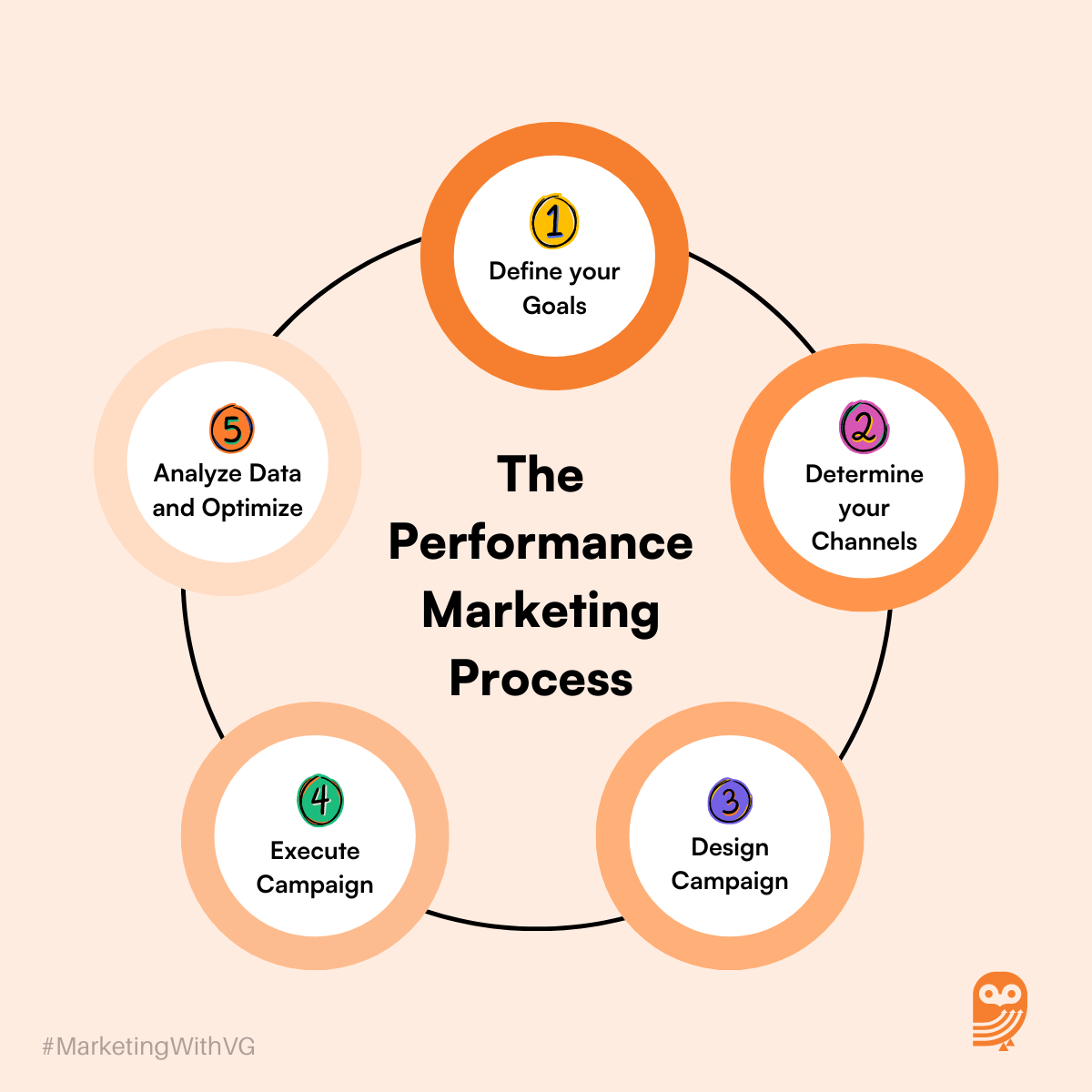
1. Defining Goals and KPIs
Start by setting clear, measurable goals. Common B2B goals include lead generation, lead nurturing, and customer acquisition. Define key performance indicators (KPIs) to track progress, such as cost per lead (CPL), conversion rates, and return on ad spend (ROAS).
2. Target Audience and Buyer Personas
Understand who your ideal customers are by creating detailed buyer personas. Consider factors like industry, company size, job roles, and pain points. This will help tailor your messaging and choose the right channels.
3. Budget Allocation
Determine your budget based on your goals and the channels you plan to use. Allocate resources to high-performing channels but remain flexible to adjust as needed based on performance data.
4. Implementing Performance Marketing Tactics
SEM Best Practices
- Keyword Research: Use tools like Google Keyword Planner to find relevant keywords.
- Ad Copy: Write compelling ad copy that includes a clear call to action (CTA).
- Landing Pages: Ensure landing pages are optimized for conversions with relevant content and forms.
Content Marketing Strategies
- Editorial Calendar: Plan your content in advance to ensure consistency.
- SEO Optimization: Use keywords strategically and ensure content is search engine friendly.
- Content Distribution: Promote your content through social media, email newsletters, and other channels.
Effective Social Media Campaigns
- Platform Selection: Choose platforms where your audience is most active.
- Engagement: Encourage interaction through polls, Q&A sessions, and engaging posts.
- Paid Campaigns: Use LinkedIn Ads to target decision-makers in specific industries.
Email Marketing Automation
- Segmentation: Segment your email list based on criteria like industry, role, and behavior.
- Personalization: Use personalized subject lines and content to increase engagement.
- Drip Campaigns: Create automated workflows to nurture leads over time.
Leveraging Affiliate Networks
- Partner Selection: Choose affiliates with an audience that aligns with your target market.
- Incentives: Offer competitive commissions and bonuses for top performers.
- Tracking: Use tracking tools to monitor affiliate performance and ROI.
Monitoring and Measuring Performance
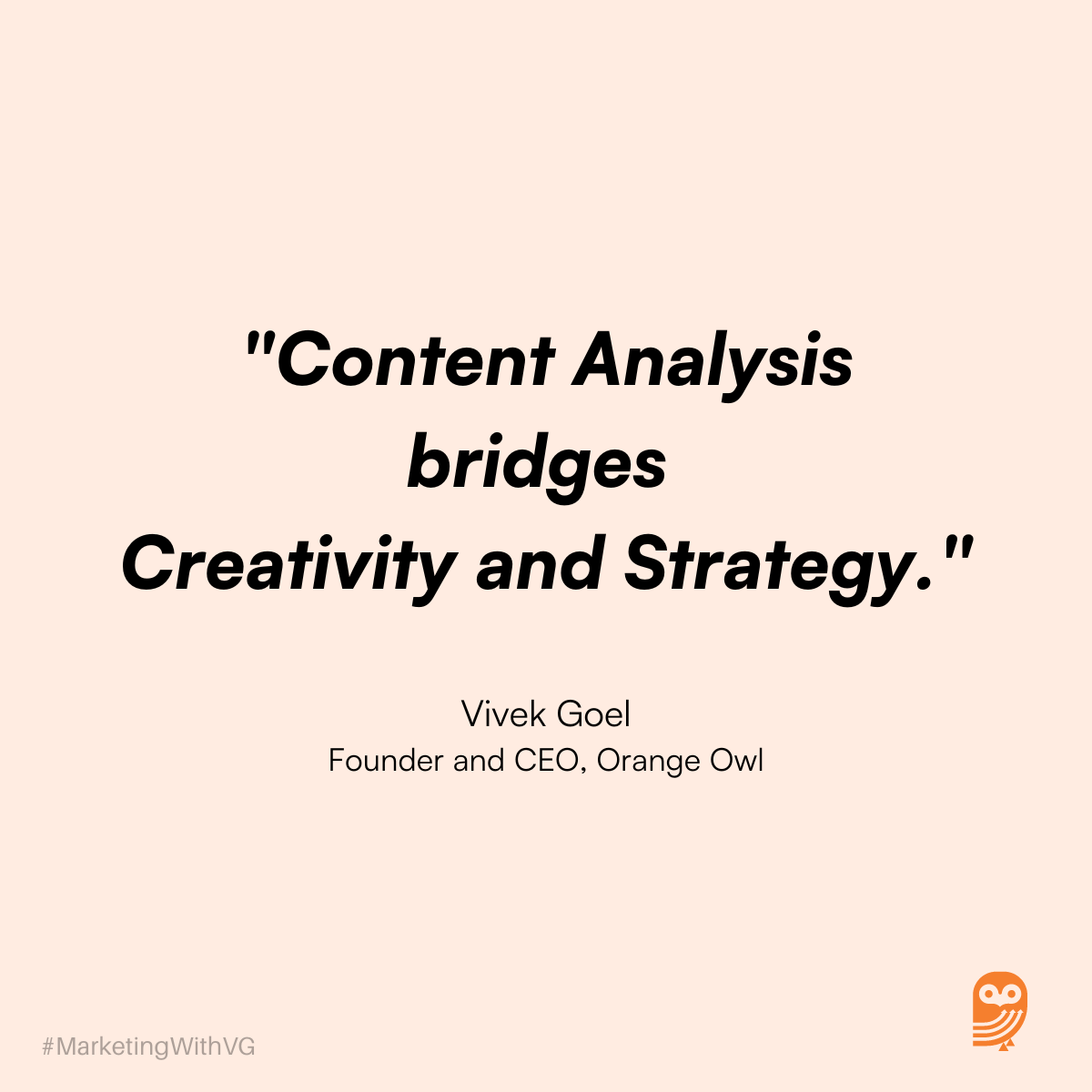
Analytics Tools and Platforms
- Google Analytics: Track website traffic and user behavior.
- Marketing Automation Platforms: Tools like HubSpot and Marketo provide detailed insights into campaign performance.
- CRM Systems: Integrate with your CRM to track lead sources and conversion rates.
Key Metrics to Track
Tracking the right metrics is crucial for understanding the effectiveness of your performance marketing efforts. Here are three essential metrics to monitor closely:
1. Cost Per Lead (CPL)
Definition: Cost Per Lead (CPL) measures the cost effectiveness of your lead generation efforts by calculating how much you spend to acquire a single lead.
Why It Matters: CPL is a vital metric because it helps you understand the efficiency of your marketing campaigns. By knowing how much you spend to generate each lead, you can assess the financial viability of your campaigns and optimize your budget allocation.
How to Calculate: CPL is calculated by dividing the total marketing spend by the number of leads generated.
CPL = Total Marketing Spend/Total Leads Generated
Example: If your total marketing spend for a campaign is $10,000 and you generate 500 leads, your CPL would be $20. CPL=10,000/500=20
Optimization Tips:
- Refine Targeting: Ensure your ads are reaching the right audience to improve lead quality.
- Optimize Ad Spend: Focus on high-performing channels and adjust bids accordingly.
- Improve Landing Pages: Enhance user experience and relevance to increase conversion rates from clicks to leads.
2. Conversion Rate
Definition: Conversion Rate is the percentage of leads that convert into customers. It measures the effectiveness of your sales funnel in turning prospects into paying clients.
Why It Matters: A high conversion rate indicates that your marketing and sales strategies are effectively moving leads through the funnel. It highlights the success of your lead nurturing and sales processes.
How to Calculate: Conversion Rate is calculated by dividing the number of conversions (customers) by the total number of leads and multiplying by 100 to get a percentage.
Conversion Rate = (Number of Conversions/Total Leads)×100
Example: If you have 500 leads and 50 of them become customers, your conversion rate is 10%.
Conversion Rate = (50/500)×100=10%
Optimization Tips:
- Enhance Lead Nurturing: Use personalized email marketing and targeted content to nurture leads.
- Align Sales and Marketing: Ensure seamless communication and collaboration between sales and marketing teams.
- Analyze Drop-Off Points: Identify where leads drop off in the funnel and address any friction points.
3. Return on Ad Spend (ROAS)
Definition: Return on Ad Spend (ROAS) measures the revenue generated for every dollar spent on advertising. It is a key indicator of the profitability of your ad campaigns.
Why It Matters: ROAS helps you determine the effectiveness and profitability of your advertising efforts. A high ROAS indicates that your ad spend is yielding significant revenue, making your campaigns cost-effective.
How to Calculate: ROAS is calculated by dividing the revenue generated from ads by the total ad spend.
ROAS = Revenue from Ads/Total Ad Spend
Example: If your ad campaign generates $50,000 in revenue and your ad spend is $10,000, your ROAS is 5.
ROAS = 50,000/10,000=5
Optimization Tips:
- Focus on High-Performing Ads: Invest more in ads and channels that generate the highest ROAS.
- Adjust Bidding Strategies: Use data to refine your bidding strategies for better ROI.
- Enhance Ad Quality: Continuously test and improve ad copy, visuals, and targeting to maximize effectiveness.
Additional Key Metrics to Consider
4. Customer Lifetime Value (CLV)
Definition: Customer Lifetime Value is the total revenue expected from a customer over their entire relationship with your company.
Why It Matters: CLV helps you understand the long-term value of your customers, allowing you to make informed decisions about customer acquisition and retention strategies.
How to Calculate: CLV can be calculated using various models, but a simple approach is to multiply the average purchase value by the number of purchases per year and the average customer lifespan.
Example: If your average customer spends $1,000 per year and remains a customer for 5 years, the CLV is $5,000.
CLV = 1,000×5 = 5,000
5. Click-Through Rate (CTR)
Definition: Click-Through Rate measures the percentage of people who click on your ad after seeing it.
Why It Matters: A high CTR indicates that your ad is relevant and compelling to your target audience, which can lead to higher engagement and conversions.
How to Calculate: CTR is calculated by dividing the number of clicks by the number of impressions and multiplying by 100.
CTR = (Number of Clicks/Number of Impressions)×100
Example: If your ad receives 1,000 impressions and 50 clicks, the CTR is 5%.
CTR = (50/1,000)×100=5%
By closely monitoring these key metrics, B2B companies can gain valuable insights into their performance marketing campaigns, identify areas for improvement, and make data-driven decisions to optimize their marketing strategies.
Optimizing and Scaling Your Efforts
A/B Testing and Experimentation
- Ad Variations: Test different ad copy, images, and CTAs to see what resonates best.
- Landing Pages: Experiment with different designs and content to improve conversion rates.
- Email Campaigns: Test subject lines, send times, and content to optimize open and click-through rates.
Data-Driven Decision Making
Use the insights gained from your analytics to make informed decisions. Identify what’s working, what’s not, and where there are opportunities for improvement.
Expert Tips for B2B Performance Marketing Success
- Leverage LinkedIn: LinkedIn is a powerful platform for B2B marketing. Use it for both organic and paid campaigns to reach decision-makers.
- Focus on Quality Content: High-quality, valuable content can significantly improve engagement and conversion rates.
- Personalization is Key: Personalized marketing messages and experiences can greatly enhance your marketing effectiveness.
- Invest in Marketing Automation: Tools like HubSpot, Marketo, and Pardot can streamline your marketing processes and improve efficiency.
- Stay Updated with Trends: The digital marketing landscape is constantly evolving. Stay updated with the latest trends and technologies to stay competitive.
Check out Top B2B Performance Marketing Agencies in India
Top 10 Tools for Performance Marketing
To maximize the effectiveness of your performance marketing campaigns, leveraging the right tools is essential. Here are the top 10 tools that can help B2B companies optimize their performance marketing efforts:
1. Google Analytics
Function: Web Analytics
Overview: Google Analytics is a powerful tool for tracking and analyzing website traffic and user behavior. It provides insights into how visitors find and interact with your site, which pages are most popular, and where improvements can be made.
2. HubSpot
Function: Marketing Automation and CRM
Overview: HubSpot offers a comprehensive suite of marketing, sales, and CRM tools. It helps manage and automate marketing tasks such as email marketing, social media posting, and lead tracking.
3. SEMrush
Function: SEO and SEM Tools
Overview: SEMrush provides extensive data for keyword research, competitive analysis, and website SEO improvements. It’s essential for optimizing search engine marketing efforts.
4. Marketo
Function: Marketing Automation
Overview: Marketo is a leading marketing automation platform that helps businesses manage and execute marketing campaigns, track engagement, and nurture leads through automated workflows.
5. LinkedIn Ads
Function: Social Media Advertising
Overview: LinkedIn Ads allows B2B companies to target professional audiences with precision. It offers various ad formats, including Sponsored Content, Sponsored InMail, and Display Ads.
6. Google Ads
Function: PPC Advertising
Overview: Google Ads enables businesses to create and manage pay-per-click (PPC) advertising campaigns. It provides detailed analytics and targeting options to reach specific audiences effectively.
7. Mailchimp
Function: Email Marketing
Overview: Mailchimp is a user-friendly email marketing platform that offers tools for creating, sending, and analyzing email campaigns. It includes features for audience segmentation, automation, and performance tracking.
8. Moz
Function: SEO Tools
Overview: Moz provides a suite of SEO tools designed to improve search engine visibility and ranking. It includes keyword research, link building, and site audit features.
9. Hootsuite
Function: Social Media Management
Overview: Hootsuite allows businesses to manage and schedule social media posts across multiple platforms from one dashboard. It also provides analytics to measure social media performance.
10. Hotjar
Function: User Experience Analytics
Overview: Hotjar provides heatmaps, session recordings, and feedback tools to understand user behavior on your website. It helps identify areas for improvement to enhance user experience and increase conversions.
By integrating these tools into your performance marketing strategy, you can gain valuable insights, automate processes, and optimize campaigns for better results.
Check this post to know more about predictions and trends for B2B Performance Marketing.
Top Mistakes and Pitfalls in B2B Performance Marketing and How to Overcome Them
Performance marketing can be incredibly effective, but it’s also rife with potential pitfalls. Understanding these common mistakes and learning how to avoid them can help ensure the success of your campaigns.
1. Lack of Clear Goals and KPIs
Mistake: Running performance marketing campaigns without clearly defined goals and key performance indicators (KPIs).
Impact: Without clear goals, it’s challenging to measure success and make informed decisions about optimizing campaigns.
Solution: Start every campaign by defining specific, measurable, achievable, relevant, and time-bound (SMART) goals. Establish KPIs that align with these goals, such as cost per lead (CPL), conversion rate, and return on ad spend (ROAS).
2. Inadequate Audience Targeting
Mistake: Not targeting the right audience or failing to segment your audience effectively.
Impact: Ineffective targeting can lead to wasted ad spend and low engagement rates.
Solution: Develop detailed buyer personas and use these to guide your targeting efforts. Leverage data to segment your audience and create tailored messaging for each segment. Use advanced targeting options available on platforms like LinkedIn and Google Ads to reach the most relevant audience.
3. Poor Ad Creative and Messaging
Mistake: Using generic or uninspiring ad creative and messaging.
Impact: Poor ad creative can result in low click-through rates (CTR) and engagement, ultimately leading to poor campaign performance.
Solution: Invest time in creating compelling ad copy and visuals. Test different creative variations to see what resonates best with your audience. Ensure your messaging clearly communicates the value proposition and includes a strong call to action (CTA).
4. Neglecting Landing Page Optimization
Mistake: Driving traffic to poorly designed or irrelevant landing pages.
Impact: Even if your ads perform well, a bad landing page can lead to high bounce rates and low conversion rates.
Solution: Optimize your landing pages for conversions by ensuring they are relevant to the ad content, load quickly, and have a clear and compelling CTA. Use A/B testing to continually refine and improve landing page performance.
5. Ignoring Mobile Users
Mistake: Failing to optimize campaigns and landing pages for mobile users.
Impact: With an increasing number of users accessing content on mobile devices, ignoring this audience can significantly reduce your campaign’s reach and effectiveness.
Solution: Ensure all your digital assets, including ads and landing pages, are mobile-friendly. Test campaigns on different devices to ensure a seamless user experience.
6. Overlooking Data and Analytics
Mistake: Not regularly monitoring and analyzing campaign performance data.
Impact: Without ongoing analysis, it’s difficult to identify what’s working and what’s not, leading to missed opportunities for optimization.
Solution: Use analytics tools to track performance metrics closely. Schedule regular reviews to analyze data and make data-driven adjustments to your campaigns. Set up automated reports and alerts to stay informed of any significant changes or issues.
7. Focusing Solely on Acquisition
Mistake: Concentrating only on acquiring new leads and neglecting lead nurturing and retention.
Impact: Acquiring new leads is important, but failing to nurture them can result in low conversion rates and wasted marketing efforts.
Solution: Implement a comprehensive lead nurturing strategy using email marketing, content marketing, and personalized follow-ups. Develop a retention strategy to engage and upsell existing customers, maximizing their lifetime value.
8. Inadequate Budget Management
Mistake: Not allocating your budget effectively or running out of budget mid-campaign.
Impact: Poor budget management can lead to underperforming campaigns or missed opportunities for scaling successful efforts.
Solution: Plan your budget carefully based on campaign goals and performance data. Allocate more resources to high-performing channels and campaigns. Monitor spend regularly and adjust as needed to ensure continuous performance.
Performance marketing can drive significant results for B2B businesses, but it requires careful planning, execution, and optimization. By avoiding these common mistakes and implementing the recommended solutions, you can enhance your performance marketing efforts and achieve your business goals more effectively. Remember, continuous learning and adaptation are key to staying ahead in the ever-evolving digital marketing landscape.
Conclusion
B2B performance marketing is a dynamic and powerful strategy for achieving measurable business results. By understanding its key components, setting up a robust strategy, implementing effective tactics, and continuously optimizing your efforts, you can drive significant growth and success for your business in 2025. Embrace the tips and best practices outlined in this guide, and leverage the power of performance marketing to stay ahead of the competition.
Top Frequently Asked Questions (FAQs) on B2B Performance Marketing
Performance marketing is a subset of digital marketing that focuses on measurable results such as clicks, leads, and conversions. Digital marketing encompasses a broader range of activities, including SEO, social media marketing, content marketing, and more, which may not always have directly measurable outcomes. Performance marketing requires a specific emphasis on data, analytics, and metrics to determine the success of campaigns.
B2B companies can measure ROI by tracking specific metrics such as cost per lead (CPL), conversion rates, and return on ad spend (ROAS). Additionally, integrating marketing efforts with a CRM system allows businesses to follow leads from initial contact through to sale, providing a clear picture of how much revenue each campaign generates.
Content is crucial in B2B performance marketing as it helps educate and engage potential customers. High-quality, relevant content can drive traffic, generate leads, and nurture prospects through the sales funnel. Types of content that work well include whitepapers, case studies, webinars, and blog posts tailored to address the pain points and needs of your target audience.
Yes, performance marketing can complement traditional marketing strategies by providing measurable data that can enhance traditional efforts. For example, a B2B company might use print advertising to raise awareness, while performance marketing can track the effectiveness of this campaign through unique URLs or QR codes that drive traffic to a digital landing page.
Customer feedback is invaluable for refining performance marketing campaigns. It provides insights into what resonates with your audience and where improvements can be made. Surveys, interviews, and reviews can help marketers understand customer needs, preferences, and pain points, allowing them to tailor their campaigns more effectively.
Common tools in B2B performance marketing include Google Analytics for tracking website performance, HubSpot and Marketo for marketing automation, SEMrush for keyword research and SEO, LinkedIn Ads for professional audience targeting, and Google Ads for PPC campaigns. Each tool provides specific functionalities that help optimize different aspects of performance marketing.
B2B companies must adhere to data privacy regulations like GDPR and CCPA by obtaining explicit consent from users before collecting their data, being transparent about how data is used, and providing options for users to manage their preferences. Implementing robust data security measures and regularly auditing marketing practices for compliance are also crucial.
Best practices for retargeting include segmenting your audience to deliver personalized ads, setting frequency caps to avoid ad fatigue, and using dynamic retargeting to show ads based on specific actions users have taken on your website. It’s also important to create compelling ad creatives that remind prospects of the value your product or service offers.
B2B companies can leverage influencer marketing by partnering with industry experts and thought leaders who have a significant following. These influencers can create authentic content that promotes your product or service. Ensure that influencer campaigns are performance-driven by tracking metrics like engagement rates, lead generation, and conversions attributed to the influencer’s content.
Future trends in B2B performance marketing include the increasing use of artificial intelligence and machine learning to optimize campaigns, the rise of account-based marketing (ABM) for highly targeted outreach, the growing importance of video content, and the integration of more advanced analytics and attribution models to better understand and measure campaign performance. Staying updated with these trends can help B2B companies stay competitive and maximize their marketing efforts.

